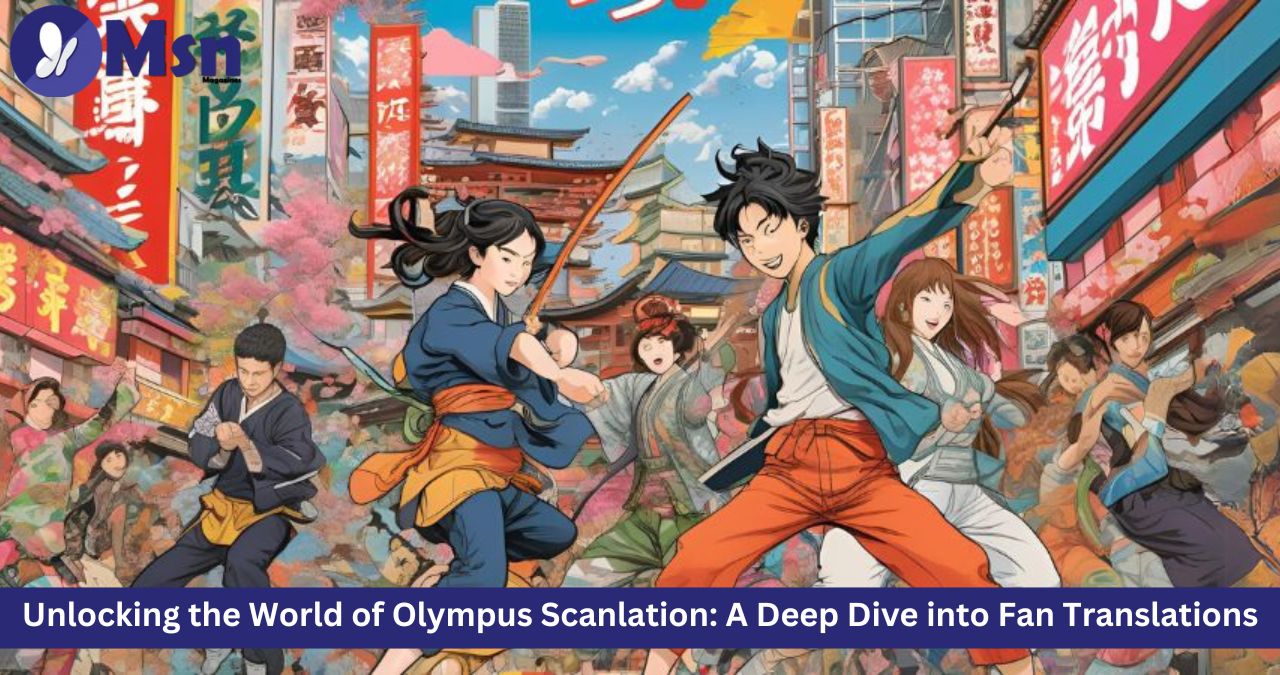In a world where digital content is just a click away, Olympus Scanlation shines as a beacon for manga enthusiasts. But what exactly is scanlation? It’s the art of fan-translating beloved manga titles into various languages, making them accessible to readers around the globe. This phenomenon has gained immense popularity over the years, fueling an underground community dedicated to sharing stories and cultures through vibrant illustrations and compelling narratives.
As fans flock to these translations, they often wonder about the journey behind each page. How do these passionate individuals bring their favorite series to life in new languages? What drives them to dedicate countless hours translating text and perfecting artwork? Join us as we explore Olympus Scanlation’s fascinating world—uncovering its history, processes, implications for the industry, and much more! You might find that there’s more than meets the eye when it comes to fan translations.
The History of Fan Translations and Scanlation Groups
Fan translations have roots that stretch back to the 1980s. Early enthusiasts took it upon themselves to translate Japanese manga and anime for non-Japanese audiences.
These pioneers operated out of passion, often working in small groups from their homes or local communities. They recognized a void in accessibility and sought to fill it with their skills.
As technology advanced, scanlation emerged as a distinct practice by combining scanning images and translating text simultaneously. Many fansubbers evolved into dedicated scanlation teams, creating works that resonated across cultures.
The growth of the internet further accelerated this movement. Websites began hosting these projects, allowing creators from around the world to share their love for manga more broadly than ever before.
With each passing year, new groups formed while older ones disbanded, yet the spirit of collaboration remained strong among fans eager to bring stories alive beyond language barriers.
The Process of Creating a Fan Translation
Creating a fan translation is a meticulous craft. It begins with sourcing the original material, often from scans of manga or comics in their native language. Enthusiasts scour the internet to find high-quality versions for their projects.
Once they have the source, it’s time for translation. This isn’t just about swapping words; it’s about capturing the essence and tone of the original text. Translators must consider cultural nuances that may not directly translate into another language.
After translating, editors jump in to refine dialogue and ensure clarity. They also check for grammatical errors and consistency throughout the work.
Then comes lettering—the process of fitting translated text into speech bubbles while maintaining artistic integrity. The final product undergoes quality checks before being shared online, allowing fans worldwide to enjoy these translations seamlessly. Each step showcases dedication and passion within the Olympus Scanlation community.
The Role of Fansubbers and Scanlators
Fansubbers and scanlators are the heartbeat of the fan translation community. They dedicate countless hours to bringing content from Japan to global audiences. These individuals often work behind the scenes, driven by passion rather than profit.
Each member plays a unique role in this intricate process. Translators convert text while editors refine dialogue for clarity. Typesetters ensure that translated words fit seamlessly into manga panels, preserving the original artwork’s integrity.
Collaboration is key in their world. Teams communicate regularly to address challenges and meet deadlines. The sense of camaraderie fosters creativity and innovation within fan translation projects.
While some may view these groups as mere pirates, their work goes beyond simple reproduction. Fansubbers and scanlators actively contribute to a vibrant culture that thrives on sharing stories across borders, enriching the global manga landscape.
Pros and Cons of Fan Translations
Fan translations, like Olympus Scanlation, offer a treasure trove of accessibility. Fans around the globe can enjoy titles that may never see official translation. This opens doors to lesser-known manga and allows niche interests to flourish.
Yet, there are drawbacks. Quality can vary significantly between different groups. Some translations might miss nuances or cultural references, leading to misunderstandings.
Additionally, fan translations can undermine original creators’ revenues. Official releases often suffer when fans opt for free versions instead of supporting licensed publishers.
Despite these issues, fan communities thrive on passion and dedication. Many fansubbers dedicate countless hours to perfecting their craft, contributing positively by fostering interest in specific genres or series that deserve more recognition.
However, navigating this landscape requires an understanding of both its benefits and pitfalls as readers seek quality content while considering the implications for authors and the industry at large.
Legality and Ethics Surrounding Scanlations
The legality of scanlations sits in a gray area. While fan translations can spread the love for manga, they often infringe on copyright laws. Publishers and creators hold the rights to their work, which includes controlling how it’s distributed.
Ethically, many argue that scanlations undermine the manga industry. They might deter readers from purchasing official releases. On the flip side, some fans believe these translations provide access to stories that wouldn’t otherwise reach international audiences.
Many creators appreciate a dedicated following but wish for fair compensation as well. The balance between sharing passion and respecting intellectual property is delicate.
Navigating this landscape requires awareness of both legal implications and ethical considerations. Fans need to reflect on their role within this community while supporting artists whenever possible.
Impact on the Manga Industry
Fan translations, like those of Olympus Scanlation, have significantly shaped the manga industry. They bridge cultural gaps and introduce titles that might otherwise fly under the radar. Many fans turn to scanlations for access to works not available in their language.
However, these unofficial translations can also create challenges. Publishers may see diminished sales from series that are freely available online. This situation complicates relationships between creators and fans, as some argue it undermines official releases.
On a positive note, successful fan translations often spark interest in original content. Publishers sometimes take notice of popular scanlated works and decide to license them for broader distribution. This dynamic highlights a complex relationship where both sides influence each other’s success within the marketplace.
As digital platforms continue evolving, so too will the role of fan translators in shaping trends and promoting new manga globally.
Conclusion
The world of Olympus Scanlation and fan translations is a fascinating landscape, rich with creativity and community spirit. As fans dive into the intricate process of translating manga, they bring stories to life for readers who may not have access to official versions.
While the history of scanlation groups showcases their dedication, it’s essential to acknowledge both the advantages and challenges that come with these unofficial translations. The skills of fansubbers and scanlators contribute significantly to this subculture but also raise questions about legality and ethics in an industry striving for proper recognition.
The impact on the manga industry cannot be understated. Although fan translations can boost popularity, they might affect sales figures in ways that complicate relationships between creators and their audiences.
As you explore Olympus Scanlation yourself, consider how this vibrant phenomenon shapes your reading experience while reflecting on its broader implications within the global manga narrative.



